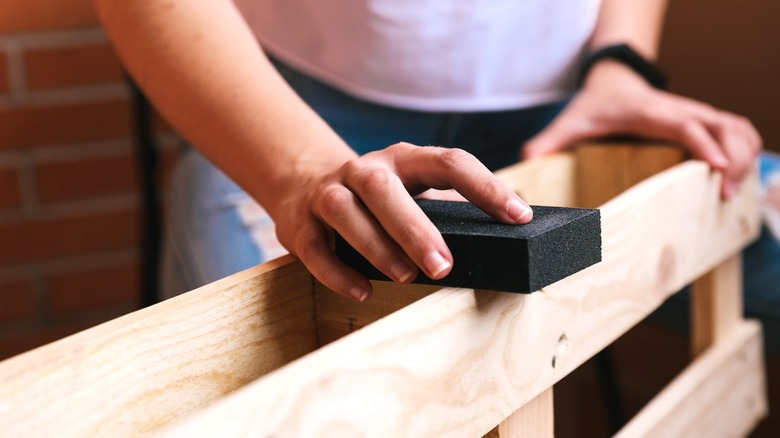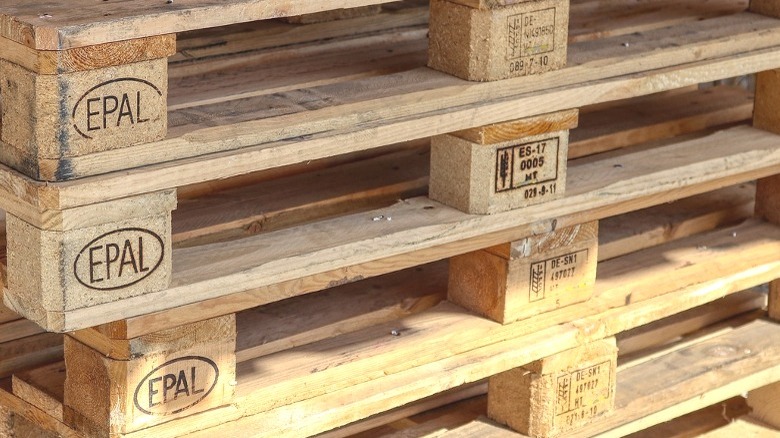The One Safety Check You Can't Skip Before Working With Wood Pallets
Are you doing your due diligence when you source pallets for your DIY projects? Traveling from state to state and country to country, wood pallets need various treatments during production to protect against pests that might tag along and wreak havoc. Modern methods only use heat to kill off any hidden critters, making the pallets safe to use for household projects. But if you repurpose pallets that went through chemical treatments, you could be exposing yourself to potential health hazards.
Banned in Europe since 2005, methyl bromide is a once-popular treatment for eliminating dangerous organisms that might hitch a ride on pallet wood, including pests, bacteria, and fungi. Though effective, methyl bromide fumigation is ozone-depleting and puts workers at risk of inhalation and skin exposure. Headaches and dizziness are among the common immediate side effects, while long-term damage may occur to the liver, heart, and kidneys. Addressing these issues, a global phaseout of methyl bromide-treated pallets was completed by 2015. Yet, the risk for anyone working on DIY pallet projects still exists today. Why? For one thing, wood pallets have a long lifespan. There's always a chance some old chemically treated pieces can enter recirculation. Methyl bromide is also currently allowed in some countries and circumstances where other treatment methods aren't possible. Although chemically treated wood is less common, checking labels is a quick safety precaution when using pallets to ensure you aren't putting your household at risk.
Spotting chemical danger in wood pallets
The International Plant Protection Commission (IPPC) requires a stamp on warehouse pallets conveying vital manufacturing information. You'll typically see the rectangular stamp at the pallet's edges. For DIYers, this stamp will tell you everything necessary to know you're using safe materials. The stamp features the IPPC wheat logo alongside codes for the country of origin, processing region, and the treatment method. That last code is the crucial bit. Treatment identifiers include DB (debarked), HT (heat treated), or KD (kiln dried). All are safe to use for your indoor and outdoor pallet projects. You may see one code on the stamp or several indicating the pallet underwent multiple treatments.
If you spot an MB code, those are the wood pallets that could release toxic methyl bromide if you saw, sand, or burn them. Avoid them at all costs. But it isn't the only treatment worth checking for. Sulfuryl fluoride (SF) is a chemical some manufacturers use to replace methyl bromide. Although it isn't as ozone-depleting as methyl bromide, it can be mildly toxic to people and potentially hazardous to fish, honey bees, and other outdoor creatures, according to the NPIC. Checking for these hazards is a minor step in finding suitable pallets. But this simple safety check is essential in ensuring your next DIY build won't put you, your family, or your local wildlife in danger.

